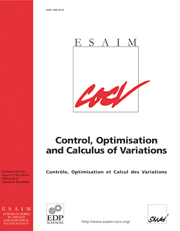Article contents
The formation of a tree leaf
Published online by Cambridge University Press: 12 May 2007
Abstract
In this article, we build a mathematical model to understand theformation of a tree leaf. Our model is based on the idea that a leaftends to maximize internal efficiency by developing an efficienttransport system for transporting water and nutrients. The meaningof “the efficient transport system” may vary as the type of thetree leave varies. In this article, we will demonstrate that treeleaves have different shapes and venation patterns mainly becausethey have adopted different efficient transport systems.The efficient transport system of a tree leaf built here is amodified version of the optimal transport path, which was introducedby the author in [Comm. Cont. Math.5 (2003) 251–279; Calc. Var. Partial Differ. Equ.20 (2004) 283–299; Boundary regularity of optimal transport paths,Preprint] to study thephenomenon of ramifying structures in mass transportation. In thepresent paper, the cost functional on transport systems iscontrolled by two meaningful parameters. The first parameterdescribes the economy of scale which comes with transporting large quantities together, while thesecond parameter discourages the direction of outgoing veins at eachnode from differing much from the direction of the incoming vein.Under the same initial condition, efficient transport systemsmodeled by different parameters will provide tree leaves withdifferent shapes and different venation patterns.Based on this model, we also provide some computer visualization oftree leaves, which resemble many known leaves including the mapleand mulberry leaf. It demonstrates that optimal transportation playsa key role in the formation of tree leaves.
Information
- Type
- Research Article
- Information
- ESAIM: Control, Optimisation and Calculus of Variations , Volume 13 , Issue 2 , April 2007 , pp. 359 - 377
- Copyright
- © EDP Sciences, SMAI, 2007
References
- 22
- Cited by

